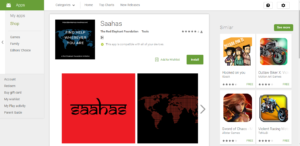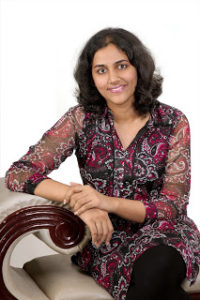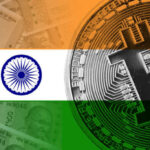Coding Courage – The World’s First App For Providing Aid to Survivors of Domestic Violence
One year ago, a friend who had just moved to the United Kingdom after her wedding, left me sixteen messages on WhatsApp one night, asking for help. She was caught without a way out of an abusive relationship. Her husband monitored her phone and laptop, and locked the house when he left it, leaving her behind. He beat her, often times being aggravated when she screamed for mercy. On many days she slept without food because he didn’t let her eat. I would learn later that she had been putting up with this for nearly 13 months. She couldn’t Google the nearest shelter or emergency support services, because using her phone meant that he could trace her.
After sending me the messages, she pulled out her SIM Card and cut it up, left her phone behind, and managed to slip out of the house. She made her way to the closest railway station; as a foreigner who had not yet become a citizen, she wasn’t aware of what rights she had on foreign soil. She spent a day switching trains until she could muster enough courage to call home and ask for the help of her parents in India. They were able to get in touch with a shelter, where she was taken care of. Her father brought her back to India, where she now lives, while proceedings for her divorce are underway.
Her story shook me up. She had put her trust in me, and I was asleep. What if there were many women like her, seeking help from across oceans, simply because they don’t know how to seek help locally? What if they continue to be vulnerable to abuse or violence, and can’t seek help because they have no access to the outside world? I wanted to do something about it.
I spent a couple of weeks talking to women to understand the factors that could hinder one’s access to crisis response. Most of the answers were obvious: lack of money, awareness, knowledge of a foreign language if they were in a different country. Then came the ones that were harsh to digest: one survivor was afraid to Google help because it left traces on the browser history – and she worried about forgetting to erase the entries in her nervousness. Another survivor told me her former partner had installed spyware in her system – and she had no idea because it was so inconspicuous. An aid worker volunteer said that fear came from being unable to verify the authenticity of a care provider – given that many organizations are forced to cut down on intakes, services, or programs, or even close down, for want of funds.
I had kicked the hornet’s nest. I was dealing with something that was so huge, it was no exaggeration to say that the nuances had nuances. I spent restless hours brainstorming the many dimensions to fill the gap between services and victims in need of those services. Then the idea struck me: what if there was a way to verify organizations in cities around the world, and present the data so that women anywhere could access a service they most needed? What if, then, this mapped data could feed into a mobile app that could be accessed by women anywhere? So a mother in India could get in touch with a shelter or the police in the UK to ensure that her daughter was rescued, or a girl in Singapore could help her sister in Ireland access urgent medical care by accessing the resource appropriately for her.

I worked with volunteers from my team at the Red Elephant Foundation, as well as the UN Online Volunteering program. We split a massive list of 197 countries among us, and by the end of two months we had a list of 5000 organizations around the world who provided aid to women who have survived violence. After the data collection I spent each night verifying that the organizations were functional: inquiry calls to their lines, online website verification, their social media presence, and conversations with people in the areas these organizations were in. Slowly as the map took shape, we realized there were entire countries that appear not to have comprehensive services. There were several segments of areas such as far Eastern Russia, parts of Central Asia and Africa that had little to no data that was accessible. It had also become apparent that we couldn’t have all the answers and find all the organizations in all cities of the world (although the aim is to get there).
We decided to make it a crowdsourced map, where people could submit reports of organizations, that we could verify and add. I started to build the data into a crowdmap. Inspired by Harassmap and Safecity, I realized there was a sense of clarity, ease and fluidity when data is visualized – rather than a downloadable directory or a pair of drop-down menus. When visualized, data helps see where resources are inadequate – so even aid providers can establish initiatives accordingly – to cover areas that are otherwise unattended to. Our team split the data into categories and mapped them with color codes: Legal help, Medical help, Resources (Food, Shelter, Clothing and Supplies), Education and Empowerment Programs, Police, Consular and Ambulance services. Right now, I’m also adding child sexual abuse support initiatives.
And somewhere in the process of putting that together, it was apparent that only a few women would access the platform on a computer and more of them used phones. So how would I get this across to them again? Through an app, of course. A few coders came forward to volunteer their services, but however well-meaning, time was of essence and they didn’t have enough to spare. A corporate house agreed to get on board, but like a relationship where the partners lapse into silence and walk their ways one fine day, that bond splintered. Then, I decided I would learn to code and do it myself. I wanted to this so badly, and I was willing to learn coding from scratch. With time not in my favour, I turned to a brilliant course on Coursera called “CODAPPS: MobileCoding for Entrepreneurs.” It made me cry, it drove me furiously mad, because I just wasn’t getting it. I’m always analytical and cause-effect in my thinking, but being one to work with emotions, situations and real people, I wasn’t fluent in machine.
When I realized that coding from scratch was not going to get me there as quickly, that I was terribly rough around the edges, and that while I decided I would code, I could also rely on what they call “SDK” in the coding world – i.e., software development kits. I learned about them on the course, and found this brilliant website called AppyPie. These blocks of pre-coded technology help you rely on several functionalities to put the choicest features together to build your app. It was smooth sailing, easy to understand and also gave me the flexibility to visualize things as I built it. Now, the app is ready and sitting in the Google Play Store as Saahas, and is on its way to making its presence on the Apple iStore as well.
About the Author:

Kirthi Jayakumar is an Indian women’s rights activist, a social entrepreneur, a peace activist, artist, lawyer and writer.
She founded The Red Elephant Foundation, an initiative built on storytelling, civilian peace-building and activism for gender equality. She is the author of Stories of Hope, a collection of short stories; The Dove’s Lament, also a collection of short stories. She received the US Presidential Services Medal in 2011 and two United Nations’ Online Volunteering Awards in 2012 and 2013.




Leave a Reply